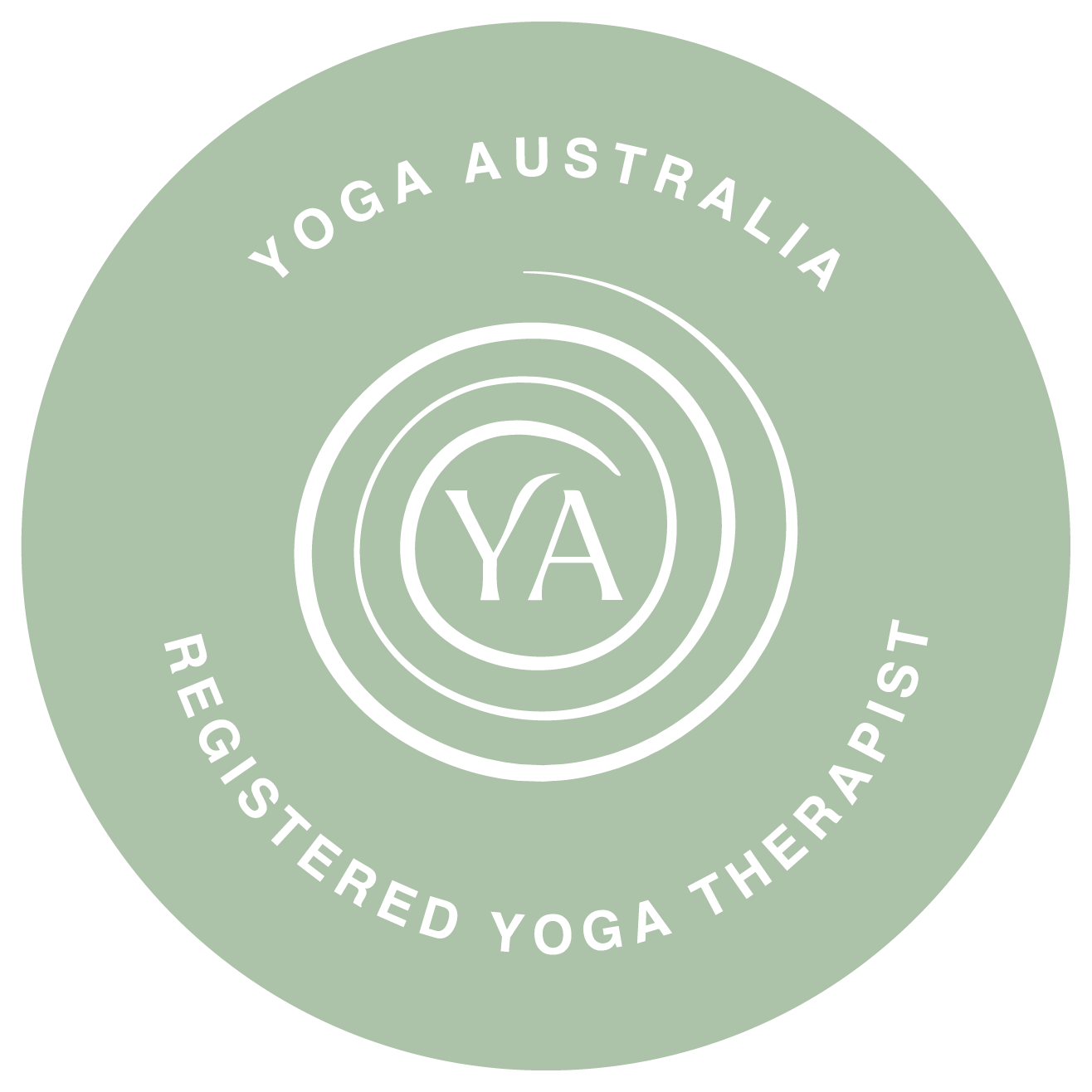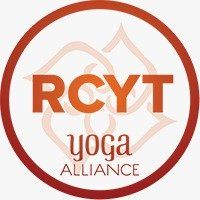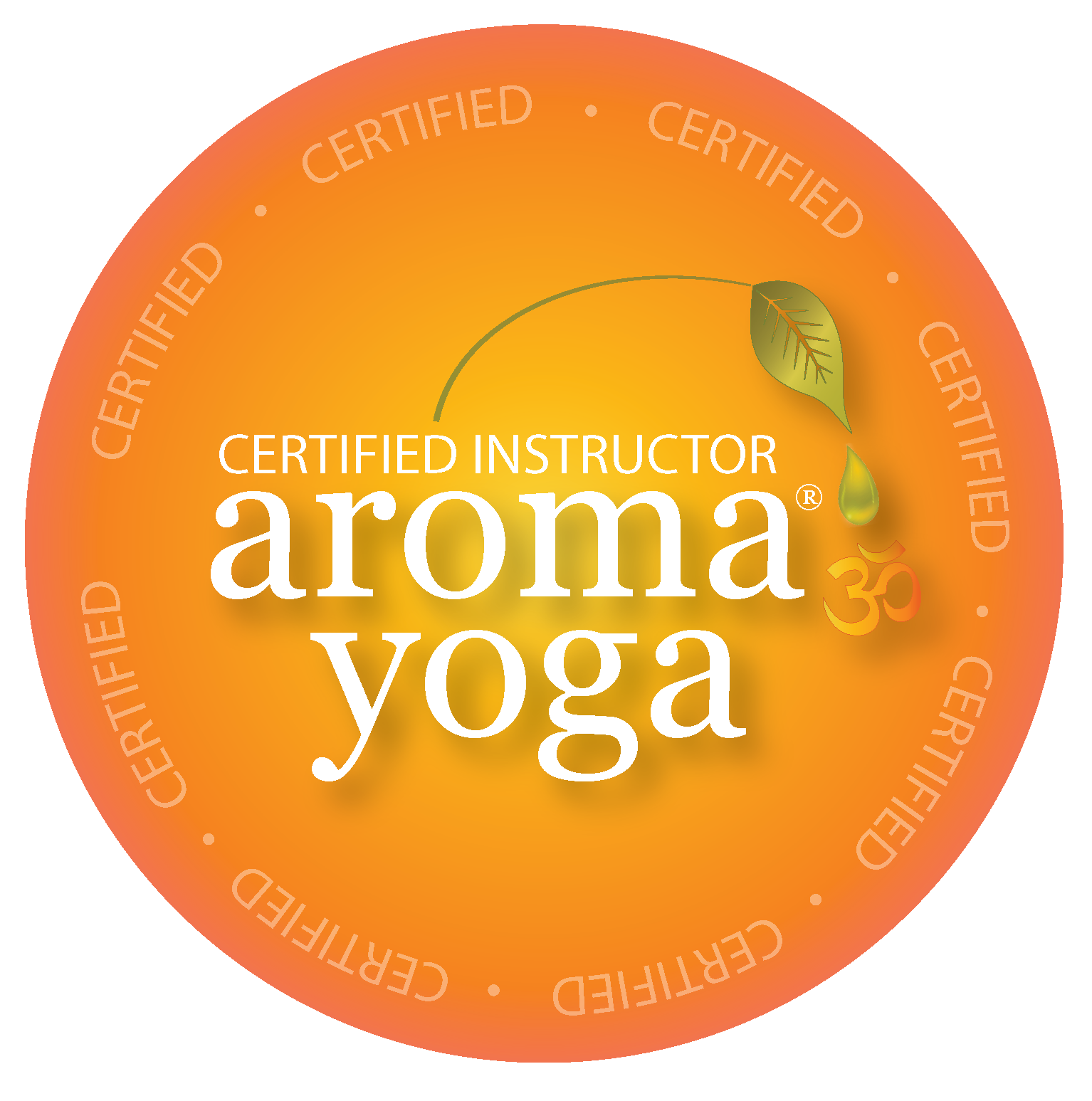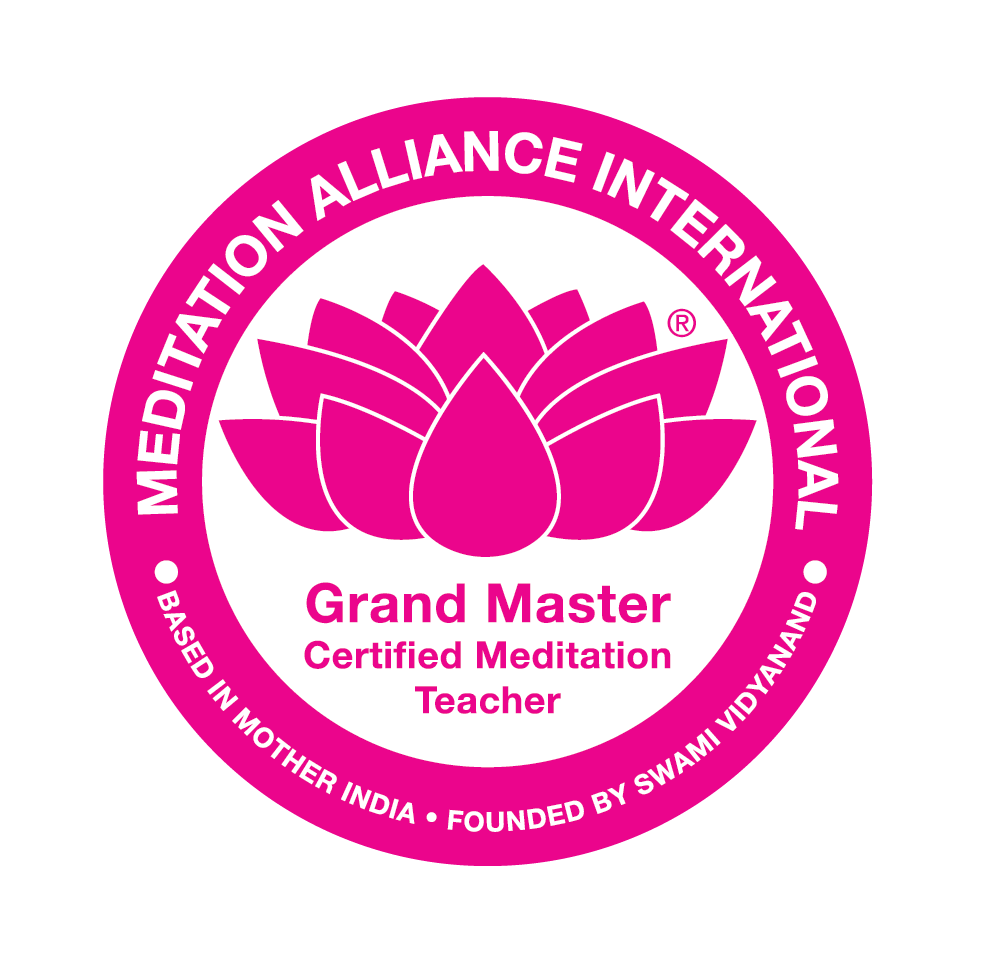Yoga Therapy and Research
Research allows Yoga Therapists to provide accurate and ethical protocols that are underpinned by a firm evidence base. This allows us to support our clients safely and effectively.
Here are some links to research and articles on a variety of health and well-being conditions and yoga.
This page will be updated regularly, so please check back.
General Research
- Although not all yoga practices include physical movement, any program that involves exercise carries an inherent risk for injury. Research suggests that yoga is at least as safe as other commonly recommended exercise programs.
Cramer H, et al. The safety of yoga: A systematic review and meta-analysis of randomized controlled trials. American Journal of Epidemiology 2015;182:281–93. - This textbook includes contributions from expert researchers and yoga therapists, and it supports the emergence of yoga therapy as a credible profession. It contains summaries of research and relevant findings.
Khalsa SBS, et al. (eds). The Principles and Practice of Yoga in Health Care. Pencaitland, UK: Handspring, 2016.
Chronic Pain
This IAYT white paper explains that yoga therapy can make a meaningful contribution to solving the overlapping public health crises of chronic pain, opioid misuse and overdose, and mental health disorders. The authors describe yoga therapy as a key component in comprehensive integrative pain management, noting that this centred intervention positively addresses body and mind and focuses on overall well-being, quality of life, and flourishing within one’s life circumstances.
Pearson N, et al. White paper: Yoga therapy and pain—How yoga therapy serves in comprehensive integrative pain management, and how it can do more. International Journal of Yoga Therapy 2020;30. (Advance online publication.)
Specialised group yoga classes are likely to be cost-effective in improving recurrent lower-back pain.
Chuang L-H, et al. A pragmatic multicentered randomized controlled trial of yoga for chronic low back pain: Economic evaluation. Spine 2012;37:1593–1601.
This study shows that yoga improves health outcomes, including lowered pain intensity and decreased use of opioids, for veterans with chronic lower-back pain.
Groessl EJ, et al. Yoga for military veterans with chronic low back pain: A randomized clinical trial. American Journal of Preventive Medicine 2017;53:599–608.
Recent findings have demonstrated that mindfulness meditation significantly reduces pain. The practice of meditation activates specific brain areas known to be involved in pain modulation. In this study, mindfulness meditation provided a stronger analgesic effect than a placebo or sham meditation.
Zeidan F, et al. Mindfulness meditation-based pain relief employs different neural mechanisms than placebo and sham mindfulness meditation-induced analgesia. The Journal of Neuroscience 2015;35:15307–25.
After 4 days of mindfulness meditation training, meditating in the presence of noxious stimulation significantly reduced pain unpleasantness by 57% and pain intensity ratings by 40% when compared to rest. This study also explored the impact of the practice of mindfulness meditation on brain areas associated with pain modulation.
Zeidan F, et al. Brain mechanisms supporting modulation of pain by mindfulness meditation. The Journal of Neuroscience 2011;31:5540–48.
Other Studies:
Pain and Yoga Therapy: Part 2 - The Lived Experience of Persisting Pain
Pain and Yoga Therapy: Part 3 – When Pain Persists
Yoga and Chronic Low Back Pain
Arthritis
This articles summarizes key considerations for yoga in rheumatic diseases, including clear guidelines to help healthcare practitioners find qualified yoga professionals. It concludes that a growing body of evidence suggests that yoga is a safe, feasible option for many living with rheumatic conditions. Furthermore, “This holistic approach to exercise with an emphasis on mindfulness and stress reduction may also offer additional opportunities to enhance psychological well-being, reduce pain and enhance function and participation, as part of a comprehensive disease management approach.”
Bartlett SJ, et al. Yoga in rheumatic diseases. Current Rheumatology Reports 2013;15.
In this 8-year clinical trial, conducted at Johns Hopkins University, a well-rounded yoga program for those with osteoarthritis and rheumatoid arthritis improved pain by 40%. Participants also demonstrated overall improvement in arthritis symptoms, physical fitness, psychological functioning, and health-related quality of life.
Moonaz SH, et al. Yoga in sedentary adults with arthritis: Effects of a randomized controlled pragmatic trial. Journal of Rheumatology 2015;42:1194–1202.
Cancer
Yoga seems to be particularly helpful in reducing stress during treatment and post-treatment disturbances in sleep and cognition.
Danhauer, SC, et al. Yoga for symptom management in oncology: A review of the evidence base and future directions for research. Cancer 2019;125:1979–89.
A meta-analysis of all relevant research on yoga for breast cancer reports that yoga markedly mitigates physical fatigue in breast cancer patients during and after treatment.
Dong B, et al. Yoga has a solid effect on cancer-related fatigue in patients with breast cancer: A meta-analysis. Breast Cancer Research and Treatment 2019;177:5–16.
“The current evidence demonstrates that yoga practice could be effective in enhancing health and managing some treatment-related side effects for patients recovering from breast cancer.”
Pan Y, et al. Could yoga practice improve treatment-related side effects and quality of life for women with breast cancer? A systematic review and meta-analysis. Asia-Pacific Journal of Clinical Oncology 2017;13:e79–e95.
Additional research on yoga as adjunctive care for breast cancer:
Sharma M, Lingam VC, & Nahar VK. A systematic review of yoga interventions as integrative treatment in breast cancer. Journal of Cancer Research and Clinical Oncology 2016;142:2523–40.
Based on 24 clinical trials, this paper suggest that clinicians consider prescribing low-intensity yoga therapy for those suffering from certain cancer treatment–related toxicities.
Lin P-J, et al. Yoga for the management of cancer treatment-related toxicities. Current Oncology Reports 2018;20:1–15.
This review cites consistent improvements in psychological outcomes (depression, distress, anxiety) for those practicing yoga therapy during cancer treatment. It also cites improved quality of life, quality of sleep, and immune biomarkers.
Danhauer SC, et al. Review of yoga therapy during cancer treatment. Supportive Care in Cancer 2018;25:1357–72.
Other Studies:
Yoga for persistent fatigue in breast cancer survivors: a randomized control trial
Randomized, controlled trial of yoga in women with breast cancer undergoing radiotherapy
Multicenter, Randomized Controlled Trial of Yoga for Sleep Quality Among Cancer Survivors
An evidence-based review of yoga as a complementary intervention for patients with cancer
An evidence-based review of yoga as a complementary intervention for patients with cancer
Cardiovascular Health
“Yoga has been shown to have favourable effects on systemic inflammation, stress, the cardiac autonomic nervous system, and traditional and emerging cardiovascular risk factors.”
Guddeti RR, et al. Role of yoga in cardiac disease and rehabilitation. Journal of Cardiopulmonary Rehabilitation and Prevention 2019;39:146–52.
According to this review of research on yoga and cardiovascular health, “Significant health benefits were reported, including favourable changes in blood pressure, body composition, glucose, and lipids.”
Barrows JL & Fleury J. Systematic review of yoga interventions to promote cardiovascular health in older adults. Western Journal of Nursing Research 2016;38:753–81.
This meta-analysis provides evidence for clinically important benefits of yoga on most biological cardiovascular disease risk factors, including blood pressure, respiratory rate, waist circumference, waist/hip ratio, cholesterol, triglycerides, and insulin resistance.
Cramer H, et al. (2014). Effects of yoga on cardiovascular disease risk factors: A systematic review and meta-analysis. International Journal of Cardiology 2014;173:170–83.
Dean Ornish’s team has many years of research to support the efficacy of a multifaceted lifestyle program—including yoga, meditation, nutrition, and social support—in improving cardiovascular outcomes and even reversing heart disease.
Ornish D, et al. Can lifestyle changes reverse coronary heart disease? The Lifestyle Heart Trial. The Lancet 1990;336:129–33.
Other Studies:
Emerging Data Support Benefits of Yoga For Patients with Heart Disease
A systematic review of yoga for heart disease
Cellular Effects
This DNA research concludes that “the cumulative effects of a regular meditation practice may, in the long-term, help to slow the epigenetic clock and could represent a useful preventive strategy for age-related chronic diseases.”
Chaix R, et al. Epigenetic clock analysis in long-term meditators. Psychoneuroendocrinology 2017;85:210–14.
The length of telomeres, the “endcaps” of chromosomes, is considered an indicator of longevity. The authors of this article “propose that some forms of meditation may have salutary effects on telomere length by reducing cognitive stress and stress arousal and increasing positive states of mind and hormonal factors that may promote telomere maintenance.”
Epel E, et al. Can meditation slow rate of cellular aging? Cognitive stress, mindfulness, and telomeres. Annals of the New York Academy of Sciences 2009;1172:34–53.
Chronic Pain
This IAYT white paper explains that “yoga therapy can make a meaningful contribution to solving the overlapping public health crises of chronic pain, opioid misuse and overdose, and mental health disorders.” The authors describe yoga therapy as a key component in comprehensive integrative pain management, noting that this patient-centered intervention “positively addresses body and mind and focuses on overall well-being, quality of life, and flourishing within one’s life circumstances.”
Pearson N, et al. White paper: Yoga therapy and pain—How yoga therapy serves in comprehensive integrative pain management, and how it can do more. International Journal of Yoga Therapy 2020;30. (Advance online publication.)
Specialized group yoga classes are likely to be cost-effective in improving recurrent lower-back pain.
Chuang L-H, et al. A pragmatic multicentered randomized controlled trial of yoga for chronic low back pain: Economic evaluation. Spine 2012;37:1593–1601.
This study shows that yoga improves health outcomes, including lowered pain intensity and decreased use of opioids, for veterans with chronic lower-back pain.
Groessl EJ, et al. Yoga for military veterans with chronic low back pain: A randomized clinical trial. American Journal of Preventive Medicine 2017;53:599–608.
“Recent findings have demonstrated that mindfulness meditation significantly reduces pain.” The practice of meditation activates specific brain areas known to be involved in pain modulation. In this study, mindfulness meditation provided a stronger analgesic effect than a placebo or sham meditation.
Zeidan F, et al. Mindfulness meditation-based pain relief employs different neural mechanisms than placebo and sham mindfulness meditation-induced analgesia. The Journal of Neuroscience 2015;35:15307–25.
“After 4 days of mindfulness meditation training, meditating in the presence of noxious stimulation significantly reduced pain unpleasantness by 57% and pain intensity ratings by 40% when compared to rest.” This study also explored the impact of the practice of mindfulness meditation on brain areas associated with pain modulation.
Zeidan F, et al. Brain mechanisms supporting modulation of pain by mindfulness meditation. The Journal of Neuroscience 2011;31:5540–48.
Other Studies:
Pain and Yoga Therapy: Part 2 - The Lived Experience of Persisting Pain
Pain and Yoga Therapy: Part 3 – When Pain Persists
Yoga and Chronic Low Back Pain
Diabetes
“This meta-analysis uncovered clinically improved effects of yoga intervention on glycemic control, lipid profiles and other parameters of T2DM management in prediabetic population.”
Ramamoorthi R, et al. The effect of yoga practice on glycemic control and other health parameters in the prediabetic state: A systematic review and meta-analysis. PloS One 2019;14:e0221067.
A growing body of evidence suggests that yoga may improve health outcomes for adults with type II diabetes mellitus (DM2). Thirty-three papers reported findings from 25 controlled trials (13 nonrandomized, 12 randomized) with a total of 2,170 participants: “Collectively, findings suggest that yogic practices may promote significant improvements in several indices of importance in DM2 management, including glycemic control, lipid levels, and body composition.”
Innes KE & Selfe TK. Yoga for adults with type 2 diabetes: A systematic review of controlled trials. Journal of Diabetes Research 2016.
Another systematic review and meta-analysis indicates moderate evidence for yoga’s improvement of fasting glucose levels compared to standard care alone.
Vizcaino M & Stover E. The effect of yoga practice on glycemic control and other health parameters in type 2 diabetes mellitus patients: A systematic review and meta-analysis. Complementary Therapies in Medicine 2016;28:57–66.
Immune Function
This systematic review summarises the key findings on yoga for improved immune function, including downregulation of proinflammatory markers (particularly IL-1beta, IL-6, and TNF-alpha) and enhancement of cell-mediated and mucosal immunity.
Falkenberg RI, Eising C, & Peters ML. Yoga and immune system functioning: A systematic review of randomized controlled trials. Journal of Behavioral Medicine 2018;41:467–82.
Mental Health
This systematic review and meta-analysis suggests that active yoga practices may ease depressive symptoms for those with a range of mental health issues.
Brinsley J, et al. Effects of yoga on depressive symptoms in people with mental disorders: A systematic review and meta-analysis. British Journal of Sports Medicine 2020. (Advance online publication.)
This paper outlines the benefits of exercise, yoga, and meditation for depression: “Yoga as monotherapy or adjunctive therapy shows positive effects, particularly for depression.” The authors also note that, “There are no apparent negative effects of mindfulness-based interventions, and their general health benefits justify their use as adjunctive therapy for patients with depression and anxiety disorders.”
Saeed SA, Cunningham K, & Bloch RM. Depression and anxiety disorders: Benefits of exercise, yoga, and meditation. American Family Physician 2019;99:620–27.
A review shows promising outcomes for stress management and burnout prevention in healthcare workers. Improvements were shown in physical health and quality of sleep. The researchers conclude that “stress levels and burnout are consistently reduced in subjects who practice yoga techniques and mind–body meditation.”
Cocchiara, RA, et al. The use of yoga to manage stress and burnout in healthcare workers: A systematic review. Journal of Clinical Medicine 2019;8:284.
This review of randomized controlled trials concluded that emerging evidence supports the benefits of yoga as an ancillary treatment for depression and sleep disorders.
Balasubramaniam M, Telles S, & Doraiswamy PM. Yoga on our minds: A systematic review of yoga for neuropsychiatric disorders. Frontiers in Psychiatry 2013;3:1–16.
This paper, published by an interdisciplinary team including scientists at Harvard University, discusses the potential for yoga to help psychological health through self-regulation.
Gard T, et al. Potential self-regulatory mechanisms of yoga for psychological health. Frontiers in Human Neuroscience 2014;8:770.
Yoga has far-reaching potential for the treatment of a broad array of disorders exacerbated by stress.
Streeter CC, et al. Effects of yoga on the autonomic nervous system, gamma-aminobutyric-acid, and allostasis in epilepsy, depression, and post-traumatic stress disorder. Medical Hypotheses 2012;78:571–79.
As an affordable and relatively accessible practice with research supporting cognitive and biological mechanisms, yoga is a promising modality for depression and anxiety management. According to this review, “The current evidence base is strongest for yoga as efficacious in reducing symptoms of unipolar depression.” It outlines potential risks that may be mitigated by working with a qualified yoga therapist.
Uebelacker LA & Broughton MK. Yoga for depression and anxiety: A review of published research and implications for healthcare providers. Rhode Island Medical Journal 2013;99:20–22.
Meditative movement, such as yoga, shows significant benefit for depression and anxiety severity, as well as remission rate. This systematic review and meta-analysis states that, “Given the fact that meditative movements are safe and easily accessible, clinicians may consider recommending meditative movements for symptomatic management in this population.”
Zou L, et al. (2018). Effects of meditative movements on major depressive disorder: A systematic review and meta-analysis of randomized controlled trials. Journal of Clinical Medicine 2018;7:195.
Other Studies:
Yoga for anxiety: A systematic review and meta-analysis of randomized controlled trials
Musculoskeletal Issues
In this case series, side-plank pose significantly reduced scoliotic curve when practiced properly for 6.8 months.
Fishman LM, Groessl EJ, & Sherman KJ. Serial case reporting yoga for idiopathic and degenerative scoliosis. Global Advances in Health and Medicine 2014;3:16–21.
This clinical trial measured bone mineral density with DEXA scans, finding that, “Bone mineral density improved in spine, hips, and femur of the 227 moderately and fully compliant patients.”
Lu YH, et al. Twelve-minute daily yoga regimen reverses osteoporotic bone loss. Topics in Geriatric Rehabilitation 2016;32:81–87.
This article explores the effects of yoga on conditions including lower-back pain, arthritis, and kyphosis, outlining clinically significant improvements in key areas including psychosocial outcomes. The authors conclude, “Evidence suggests that yoga is an acceptable and safe intervention, which may result in clinically relevant improvements in pain and functional outcomes associated with a range of musculoskeletal conditions.”
Ward L, et al. Yoga for functional ability, pain and psychosocial outcomes in musculoskeletal conditions: A systematic review and meta-analysis. Musculoskeletal Care 2013;11:203–17.
Neurological Effects
A systematic review on yoga for balance shows moderate evidence of decreased fall risk in community-dwelling older adults and people with cerebrovascular accidents, Alzheimer’s disease, and multiple sclerosis.
Green E, et al. Systematic review of yoga and balance: Effect on adults with neuromuscular impairment. The American Journal of Occupational Therapy 2019;73:1–11.
“This review suggests that mind-body practices can target different brain systems that are involved in the regulation of attention, emotional control, mood, and executive cognition that can be used to treat or prevent mood and cognitive disorders of ageing, such as depression and caregiver stress, or serve as ‘brain fitness’ exercise. Benefits may include improving brain functional connectivity in brain systems that generally degenerate with Alzheimer’s disease, Parkinson’s disease, and other ageing-related diseases.”
Acevedo BP, Pospos S, & Lavretsky H. The neural mechanisms of meditative practices: Novel approaches for healthy aging. Current Behavioral Neuroscience Reports 2016;3:328–39.
Meditation is associated with increased cortical thickness, a positive indicator of brain health and function.
Lazar SW, et al. Meditation experience is associated with increased cortical thickness. NeuroReport 2005;16:1893–97.
This paper describes ancient yoga wisdom in terms of neuroscientific topics of self-regulation and resilience.
Sullivan MB, et al. Yoga therapy and polyvagal theory: The convergence of traditional wisdom and contemporary neuroscience for self-regulation and resilience. Frontiers in Human Neuroscience 2018;12:1–15.
Images and an explanatory model for the brain-activation patterns associated with mindfulness meditation:
Tang Y-Y, Hölzel BK, & Posner MI. The neuroscience of mindfulness meditation. Nature Reviews Neuroscience 2015;16:213.
“This review found that mind-body exercises demonstrated immediate moderate to large beneficial effects on motor symptoms, postural instability, and functional mobility among individuals with mild to moderate Parkinson’s disease.”
Yan J, Kwok Y, & Hons BN. Effects of mind-body exercises on the physiological and psychosocial well-being of individuals with Parkinson’s disease: A systematic review and meta-analysis. Complementary Therapies in Medicine 2016;29:121–31.
“Brief mindfulness training significantly improved visuo-spatial processing, working memory, and executive functioning.” Even just a few days of meditation training may improve ability to sustain attention, a benefit previously reported in long-term meditators.
Zeidan F, et al. Mindfulness meditation improves cognition: Evidence of brief mental training. Consciousness and Cognition 2010;19:597–605.
Palliative Care
“Yoga therapy for palliative care is based on gentleness and compassion. It aims to empower the patient to accept and face the illness and death by holistic experience which has physical, mental, emotional, and spiritual dimensions.” This commentary also notes that mindfulness practices promote emotional regulation through present-moment awareness, acceptance, and non-reactivity, potentially enhancing quality of life.
Deshpande A. Yoga for palliative care. Integrative Medicine Research 2018;7:211–13.
Paediatrics
This paper concludes that “yoga may help children and young people cope with stress and thus, contribute positively to balance in life, well-being, and mental health.” According to the review, “yoga in schools helps students improve resilience, mood, and self-regulation skills pertaining to emotions and stress.”
Hagen I & Nayar US. Yoga for children and young people’s mental health and well-being: Research review and reflections on the mental health potentials of yoga. Frontiers in Psychiatry 2014;5:1–6.
This review of 47 publications found that “yoga in the school setting is a viable and potentially efficacious strategy for improving child and adolescent health.” Yoga addresses the whole child, emphasizing a social and emotional learning model.
Khalsa SBS & Butzer B. Yoga in school settings: A research review. Annals of the New York Academy of Sciences 2016;1373:45–55.
Respiratory Health
Advantageous effects of yogic breathing on the neurocognitive, psychophysiological, respiratory, biochemical, and metabolic functions in healthy individuals were elicited. These techniques were also found useful in management of various clinical conditions.
Saoji AA, Raghavendra BR, & Manjunath NK. Effects of yogic breath regulation: A narrative review of scientific evidence. Journal of Ayurveda and Integrative Medicine 2019;10:50–58.
This review shows that for children and adolescents with asthma, “Interventions involving either mindfulness or yoga may be effective in reducing stress and anxiety and improving quality of life and lung function.”
Lack S, Brown R, & Kinser PA. An integrative review of yoga and mindfulness-based approaches for children and adolescents with asthma. Journal of Pediatric Nursing 2020;52:76–81. (Advance online publication.)
“Yoga and Tai Chi are widely available in the community and have been shown to be beneficial in patients with COPD as well as many of the co-morbid conditions associated with COPD.”
Ratarasarn K & Kundu A. Yoga and tai chi: A mind-body approach in managing respiratory symptoms in obstructive lung diseases. Current Opinion in Pulmonary Medicine 2020;26:186–92.
Meditation, a key component of yoga, seems to improve efficiency of gas exchange and oxygenation. This paper concluded that, “Meditation induces favourable changes in cardiovascular and respiratory end points of clinical interest.”
Bernardi F, et al. Acute fall and long-term rise in oxygen saturation in response to meditation. Psychophysiology 2017;54:1951–66.
This study showed increased vagal function (and autonomic nervous activity), accounting for lowered blood pressure and increased heart rate variability during the yogic practice of alternate-nostril breathing.
Balkrishna A. Blood pressure and heart rate variability during yoga-based alternate nostril breathing practice and breath awareness. Medical Science Monitor Basic Research 2014;20:184–93.
Seniors
“This study provides robust evidence for promoting yoga in physical activity guidelines for older adults as a multimodal activity that improves aspects of fitness like strength, balance and flexibility, as well as mental wellbeing.”
Sivaramakrishnan D, et al. The effects of yoga compared to active and inactive controls on physical function and health related quality of life in older adults—Systematic review and meta-analysis of randomised controlled trials. The International Journal of Behavioral Nutrition and Physical Activity 2019;16:33.
“Recent literature data suggests that Yoga and other contemplative practices may revert, at least in part, some of the ageing effects in brain functional connectivity, including the Default Mode Network (DMN).” Older women who had practiced yoga for at least 8 years showed greater DMN connectivity. “This finding may contribute to the understanding of the influences of practicing Yoga for a healthier cognitive aging process.”
Santaella DF, et al. Greater anteroposterior default mode network functional connectivity in long-term elderly yoga practitioners. Frontiers in Aging Neuroscience 2019;11:158.
This study on yoga for older adults showed improved functional abilities and strength.
Wang MY, et al. Physical-performance outcomes and biomechanical correlates from the 32-week yoga empowers seniors study. Evidence-Based Complementary and Alternative Medicine 2016.
Through neuroimaging, this study showed greater cortical thickness in elderly yoga practitioners compared to healthy age-matched controls, suggesting increased brain health.
Afonso RF, et al. Greater cortical thickness in elderly female yoga practitioners—A cross-sectional study. Frontiers in Aging Neuroscience 2017;9:1–6.
Stress
The stress response has wide-ranging implications in the human body-mind system, and yogic practices such as meditation appear to have the ability to address these effects via a number of channels.
Househam AM, et al. The effects of stress and meditation on the immune system, human microbiota, and epigenetics. Advances in Mind-Body Medicine 2017;31:10–25.
This first systematic review of randomized controlled trials (RCT) on yoga’s effects on mood and the brain found that yoga decreases blood pressure, heart rate, and expression of stress markers like cortisol and cytokines.
Pascoe MC & Bauer IE. A systematic review of randomised control trials on the effects of yoga on stress measures and mood. Journal of Psychiatric Research 2015;68:270–82.
This meta-analysis of RCTs involving yoga postures compared to active controls found that yoga positively affects physiological measures of stress including heart rate, heart rate variability, fasting blood glucose, and cholesterol.
Pascoe MC, Thompson DR, & Ski CF. Yoga, mindfulness-based stress reduction and stress-related physiological measures: A meta-analysis. Psychoneuroendocrinology 2017;86:152–68.
Other Studies:
Impact of long term Yoga practice on sleep quality and quality of life in the elderly
Effects of yoga on quality of sleep of women with premenstrual syndrome
Urinary Health
This review of relevant research concludes that yoga may reduce lower urinary tract symptoms by “increasing the strength of pelvic floor muscle and/or regulating the autonomic nervous system and activating the central nervous system.”
Sha K, Palmer MH, & Yeo S. Yoga’s biophysiological effects on lower urinary tract symptoms: A scoping review. Journal of Alternative and Complementary Medicine 2019;25:279–87.
“Findings provide preliminary evidence to support the feasibility, efficacy, and safety of a group-based yoga therapy intervention to improve urinary incontinence in women.”
Huang A, et al. PD32-01 a randomized trial of a group-based therapeutic yoga program for ambulatory women with urinary incontinence. The Journal of Urology 2018;199:e645.
Women's Health / Reproductive Health
“Preliminary evidence suggests that mind-body interventions, including mindfulness-based interventions and yoga, may be effective in reducing mental health difficulties and psychological distress in infertile patients undergoing fertility treatments.”
Gaitzsch H, et al. The effect of mind-body interventions on psychological and pregnancy outcomes in infertile women: A systematic review. Archives of Women’s Mental Health 2020. (Advance online publication.)
“The evidence presented in this review suggests that mindfulness and yoga practice are feasible and cost-effective interventions to enhance maternal mental health, particularly for women experiencing mental health challenges.”
Van der Riet P, Francis L, & Rees A. (2019). Exploring the impacts of mindfulness and yoga upon childbirth outcomes and maternal health: An integrative review. Scandinavian Journal of Caring Sciences 2019. (Advance online publication.)
“Yoga is a noninvasive, easy to learn mind-body medicine and complementary health practice, effective in alleviation of labor pain and possibly improving birth outcome.”
Chethana B, et al. Prenatal yoga: Effects on alleviation of labor pain and birth outcomes. The Journal of Alternative and Complementary Medicine 2018. [Online ahead of print.]
This review concluded that yoga is a safe and effective intervention during pregnancy. “Yoga can be safely used for pregnant women who are depressed, at high-risk, or experience lumbopelvic pain. Moreover, yoga is a more effective exercise than walking or standard prenatal exercises.”
Jiang Q, et al. Effects of yoga intervention during pregnancy: A review for current status. American Journal of Perinatology 2015;32:503–14.
Other Studies:
Join our mailing list for news and updates.







